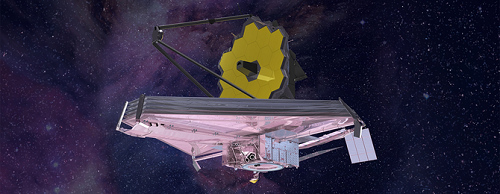Icy Moons, Galaxy Clusters, and Distant Worlds Among Selected Targets for James Webb Space Telescope
Mission officials for NASA’s James Webb Space Telescope announced some of the science targets the telescope will observe following its launch and commissioning. These specific observations are part of a program of Guaranteed Time Observations (GTO), which provides dedicated time to the scientists that helped design and build the telescope’s four instruments.

“From the very first galaxies after the Big Bang, to searching for chemical fingerprints of life on Enceladus, Europa, and exoplanets like TRAPPIST-1e, Webb will be looking at some incredible things in our universe,” said Eric Smith, James Webb Space Telescope Director at NASA Headquarters in Washington. “With over 2,100 initial observations planned, there is no limit to what we might discover with this incredible telescope.”
The broad spectrum of initial GTO observations will address all of the science areas Webb is designed to explore, from first light and the assembly of galaxies to the birth of stars and planets. Targets will range from the solar system’s outer planets (Jupiter, Saturn, Uranus, and Neptune) and icy Kuiper Belt to exoplanets to distant galaxies in the young universe.
“The definition of observations to be conducted by the Webb Guaranteed Time Observers is a major milestone along the timeline for producing revolutionary science with this incredibly powerful observatory. These observations by the teams of people who designed and built the Webb instruments will yield not only amazing science, but will be crucial in putting the observatory through its paces and understanding its many capabilities,” said Dr. Ken Sembach, director of the Space Telescope Science Institute in Baltimore, which will lead science and mission operations for Webb.
“I am very pleased that we’re at this point since it is now possible for the broader science community to begin selecting targets and designing observations for the Early Release Science program and the Cycle 1 call for proposals, which will be issued this fall,” he added.
Observing time on Webb is scheduled in a series of cycles. Cycle 1 will encompass about 8,700 hours, or nearly a year. For their dedicated work on the project, the Guaranteed Time Observers were awarded 10 percent of the total JWST observing time in the prime mission. To maximize the overall Webb scientific return, the GTO projects will be scheduled earlier in the mission, and are expected to be completed within the first two years of telescope operations.
The observations on June 15th, announced will help the broader scientific community plan their proposals for observations to be made during Cycle 1. A call for proposals for regular Cycle 1 observations will be issued later this year.
Source: HubbleSite
- 472 reads
Human Rights
Ringing FOWPAL’s Peace Bell for the World:Nobel Peace Prize Laureates’ Visions and Actions

Protecting the World’s Cultural Diversity for a Sustainable Future

The Peace Bell Resonates at the 27th Eurasian Economic Summit

Declaration of World Day of the Power of Hope Endorsed by People in 158 Nations

Puppet Show I International Friendship Day 2020

